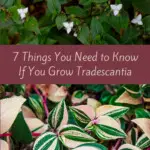
Inch plant, spiderwort, Wandering Dude, whatever you call them, tradescantia is the perfect houseplant for when you get tired of all the philodendrons that look the same.
Tradescantia, which are native to the Americas, have striking foliage.
Some have leaves that seem to shimmer, and others have leaves of the deepest emerald on one side and burgundy on the other. Some have stripes that almost look as though they’re made of silver. There are inch plants with tiny leaves on the most delicate stems; others have large leaves cascading down thick stems.
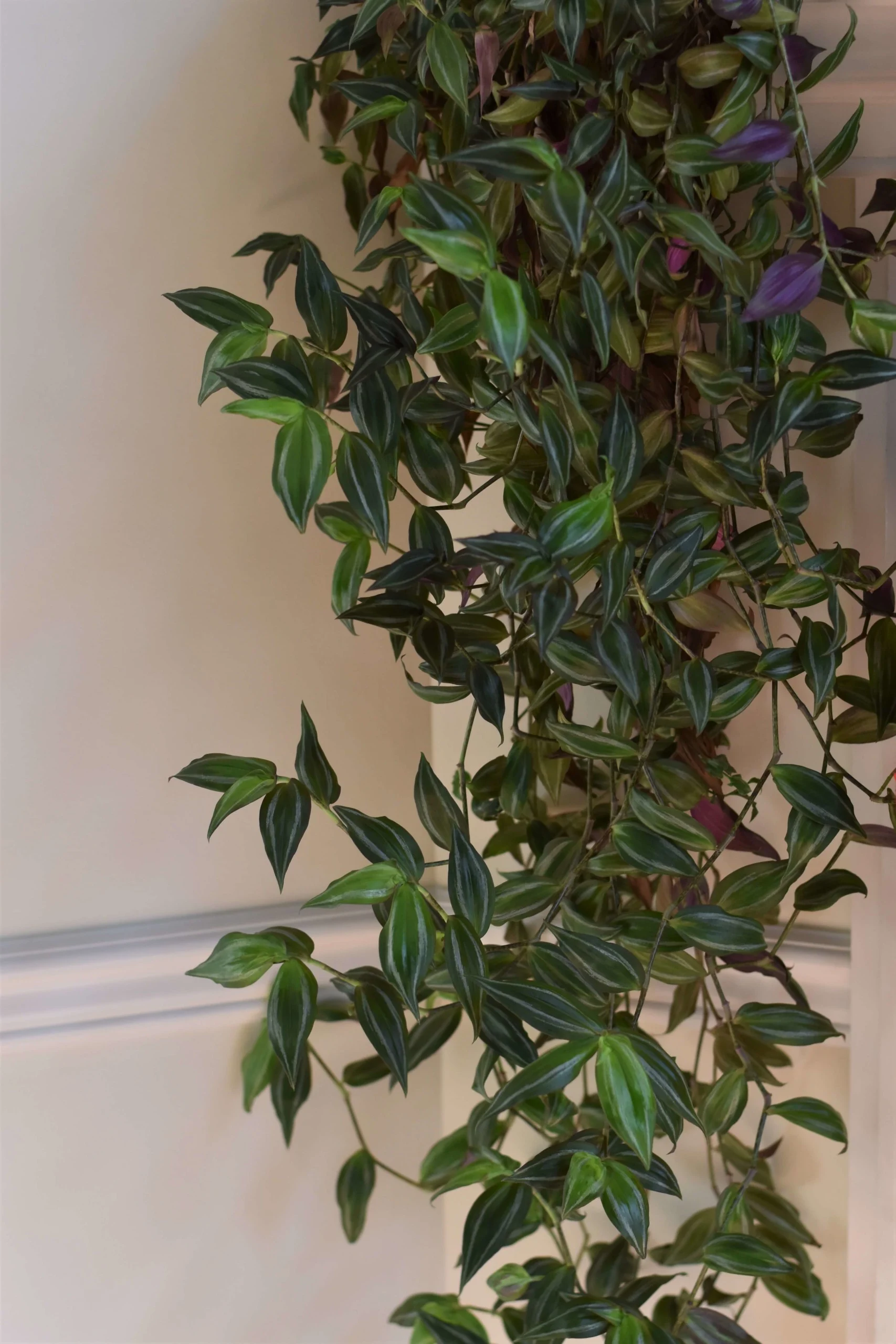
There are even soft, fuzzy tradescantia. But no matter which you choose to grow, you should know a few things about this popular houseplant.
1. Tradescantia are Virtually Unkillable
Inch plants might just be the easiest houseplant to keep alive. Their ability to thrive in nearly all parts of the world has landed them on several invasive species lists. But this ability to grow no matter where they’re planted makes them the perfect houseplant. They’re even on our list of Hard to Kill Houseplants.
These hardy plants always seem to bounce back no matter how sad-looking they get from neglect.
If you travel or are a forgetful waterer, this houseplant is for you. They’re very forgiving and will fit into any space. They can be kept quite compact or large and bushy. And they make a stunning hanging plant with long trailing stems of colorful foliage.
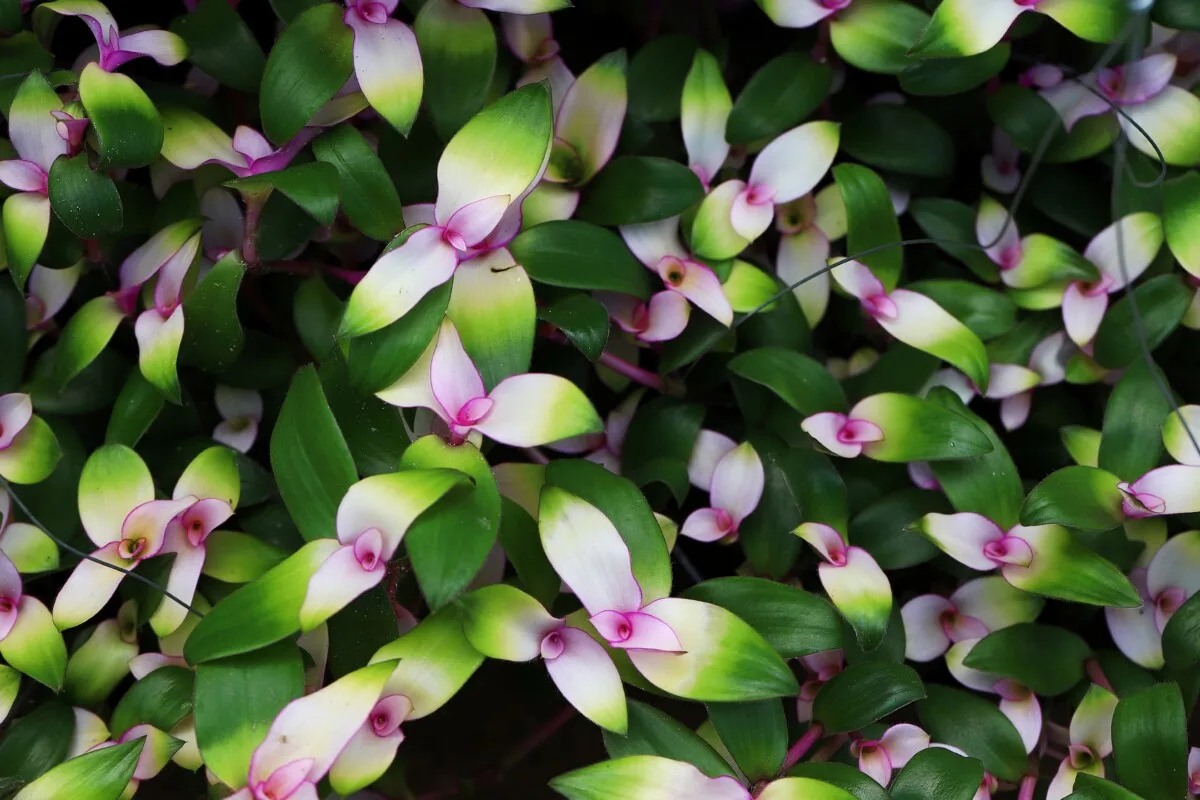
They aren’t super picky about soil, and as long as you don’t overwater them too often, they’re relatively disease-free. As far as pests go, spider mites can sometimes be a problem, but they’re easily dealt with by misting the plant once a week.
And even if you forget all those things, an inch plant will probably still survive.
2. Easy to Propagate and Start New Plants
Tradescantia are incredibly easy to propagate; it’s part of what makes them grow so easily. Anywhere a node touches the soil, it will put out roots and begin growing. You don’t even have to bother with water.
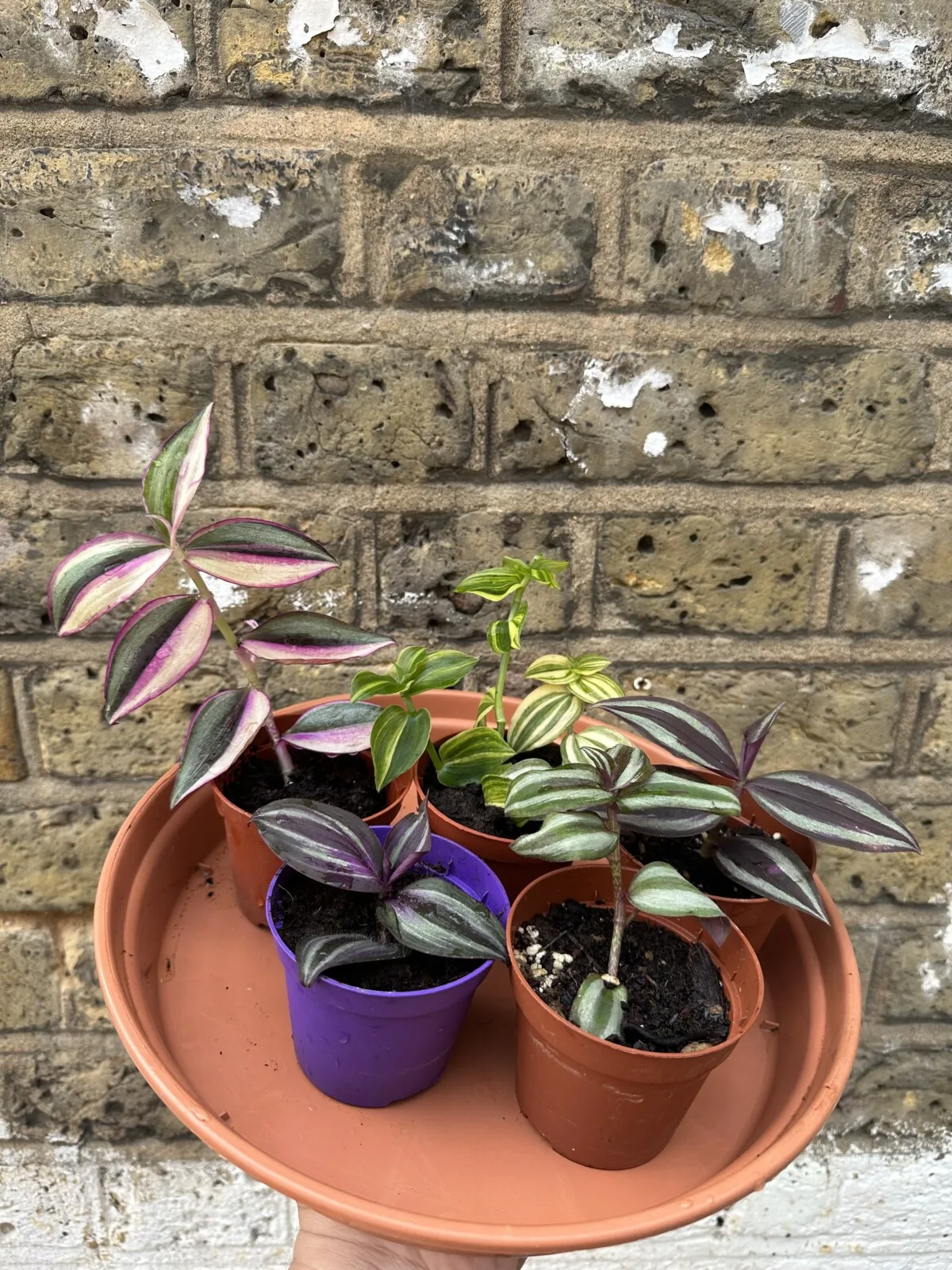
Simply place stems in a pot of moist soil so that the leaf node is below the soil. The more stems you poke in the dirt, the fuller your plant will be. Cover the pot with a clear plastic bag to keep in moisture, and within a couple of weeks, the stems will have roots.
If you’ve already got a tradescantia and it’s looking a little thin, lay one of the trailing stems across the surface of the soil. Wherever there is a leaf node, it will put down roots and start growing new stems.
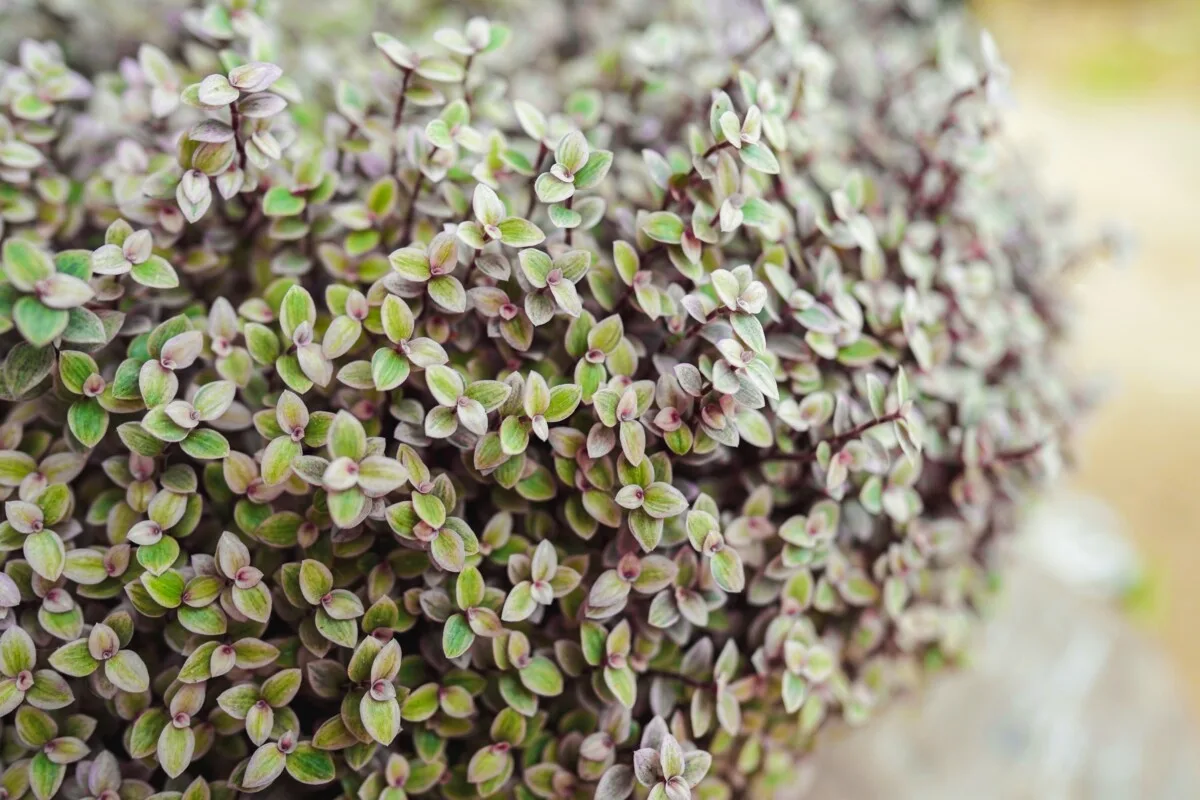
Related Reading: 7 Houseplants You Can Grow In Water – No Soil Required
3. Use Your Tradescantia to Help Root Other Plants
Because tradescantia are so prolific, you can use them to help other plants set roots. The fluids in the stem contain natural rooting hormones, which make it easy for the plant to set roots from any node.
Some plants can be difficult to propagate and can benefit from applying rooting hormones.
If you have a tradescantia, then you’re in luck; simply snip a stem and squeeze some of the juices onto the cut stem of the cutting you are trying to propagate. Or if you’re propagating by water, squeeze the juices into the water.
Related reading: 5 Easy To Find And Scientifically Backed Natural Rooting Hormones
4. The Wandering Dude
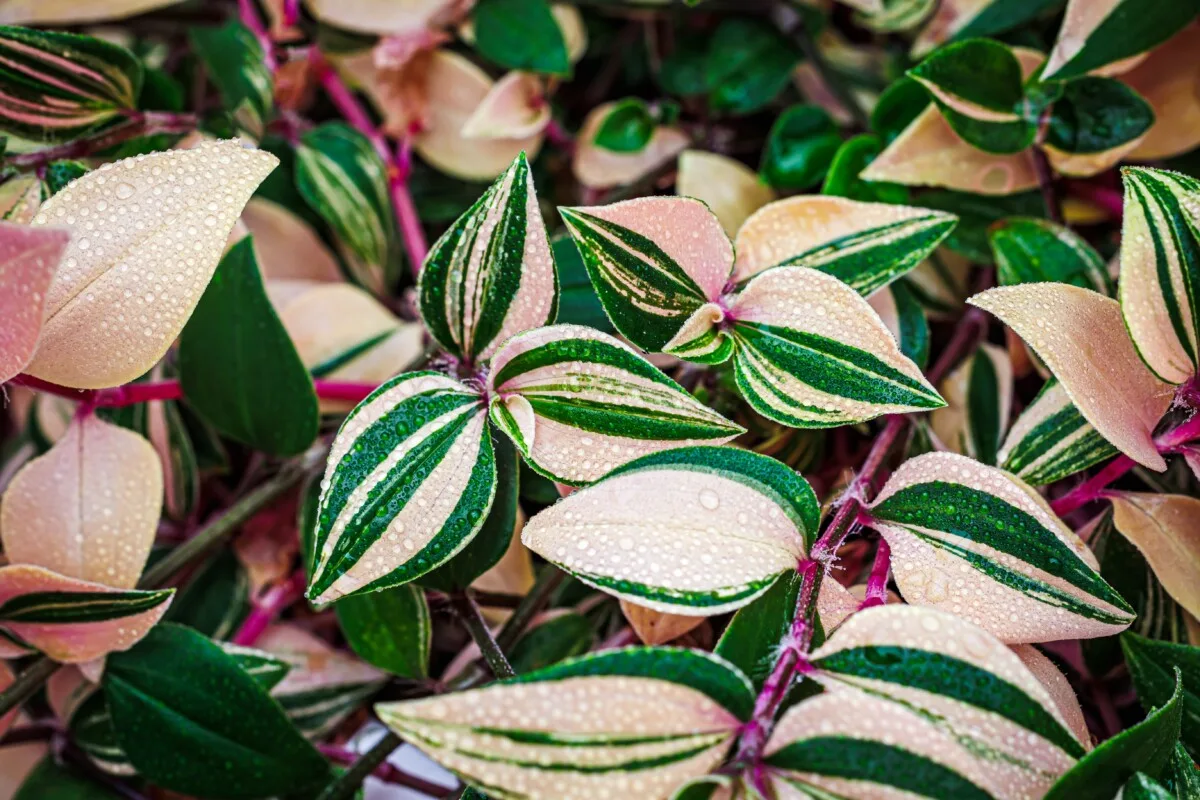
Until recently, several species of inch plant were known by the common name of Wandering Jew. The name seems innocuous on the surface; most people assumed it was related to the bible story of the Israelites wandering in the desert.
However, it’s derived from a fictional story about a man who supposedly mocked Jesus on his way to the cross.
The mocker was cursed to wander the earth. This mocking Jewish man has been used to promote antisemitism as recently as WWII and as far back as the 13th century.
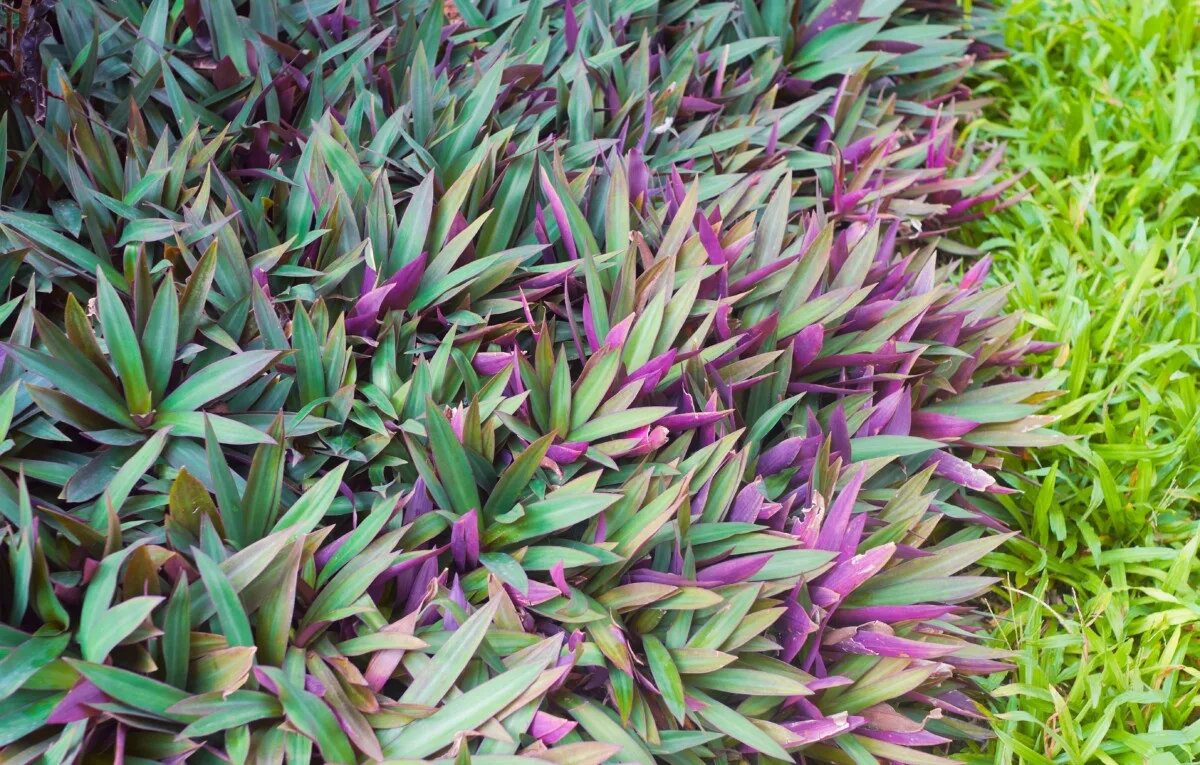
These days, the Wandering Jew has been replaced by the Wandering Dude. And as we all know, the Dude abides, so it’s a fitting name for such a prolific plant.
5. Fairy Flowers
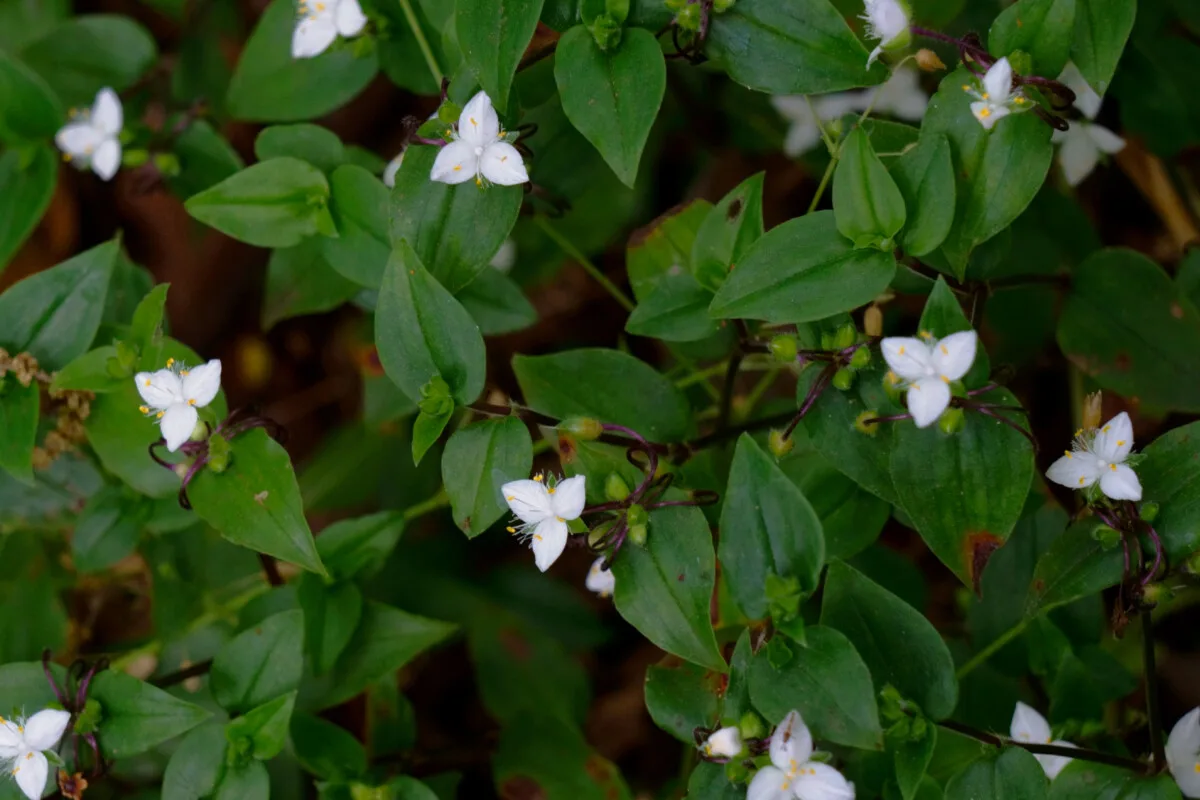
Tradescantia produces tiny three-petaled flowers in shades of blue, purple, pink, and snowy white. The flowers bloom for a day, but when many bloom at once, it creates stunning points of color against the dark emerald leaves.
Like all flowering plants, they need plenty of bright, indirect light to blossom.
If you want to encourage flowers, use a fertilizer made for African violets to provide the right nutrients for blossom development. Keep the soil moist but not soggy, and with a little patience, you should see buds, especially if the plant has gone through a period of dormancy in the fall and winter.
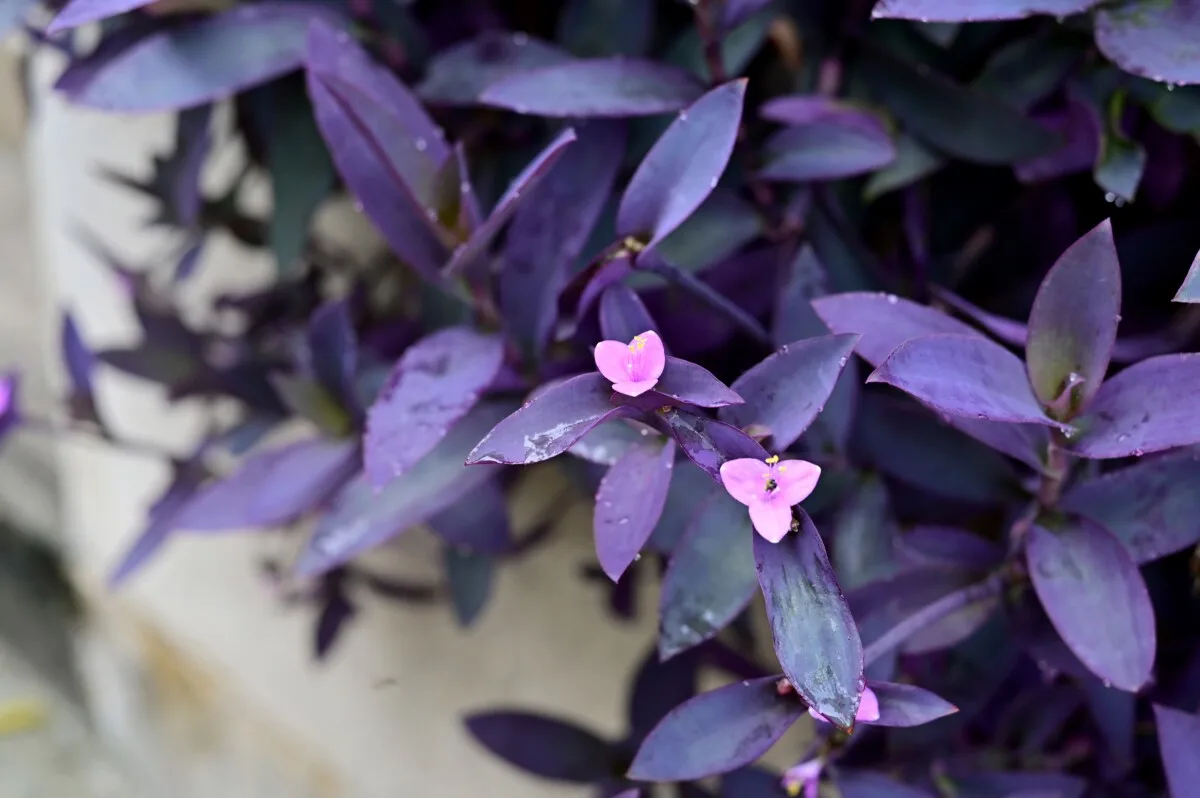
Of course, it’s worth remembering that most tradescantia species are not prolific bloomers. But there are a few, such as Tradescantia pallida and Tradescantia multiflora, that are more likely to produce blooms than others. Be patient; you’ll be rewarded eventually.
6. Tradescantia Leaves Often Fade
The most common question about tradescantia is why the leaves are fading or changing color. It all has to do with light. To achieve the best color and healthiest leaves, stick to the following:
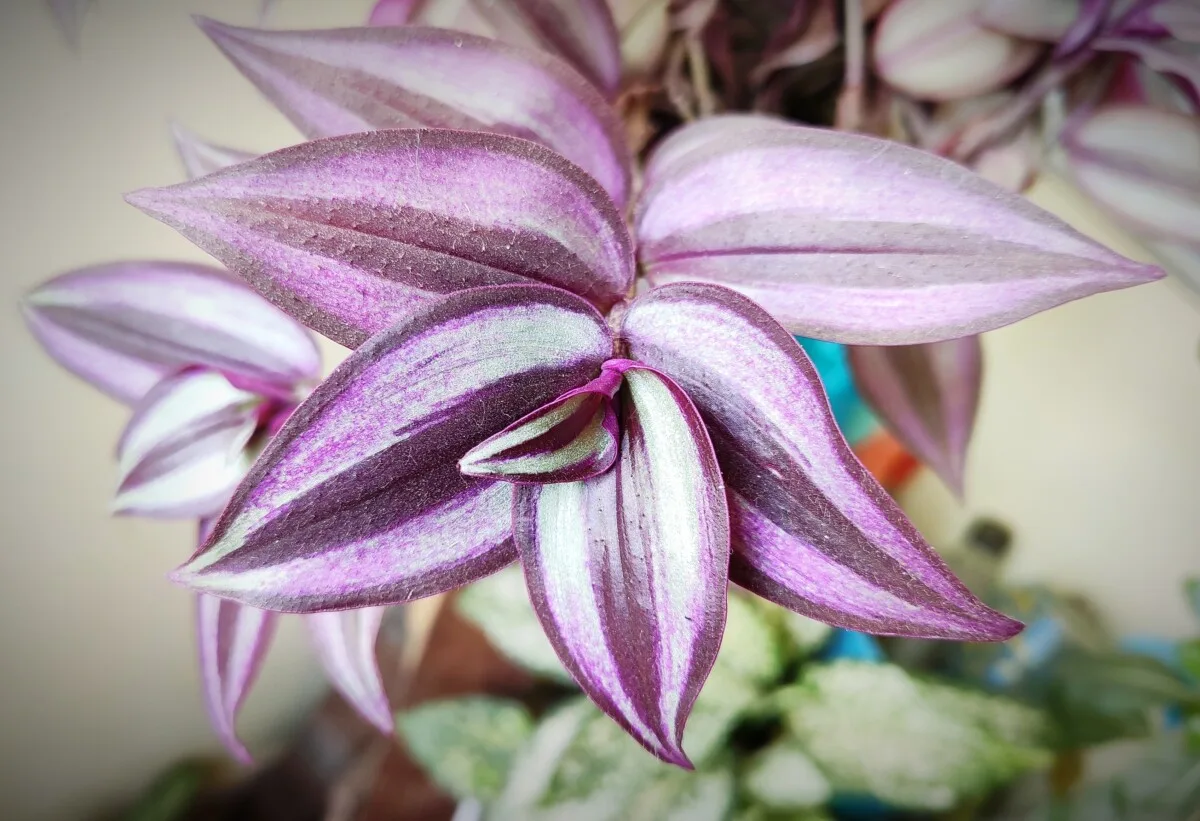
Low Light – Tradescantia plants need plenty of bright, indirect light. If your plant isn’t receiving enough light, the leaves may lose their vibrant color and appear washed out. Move the plant to a location with brighter, filtered sunlight to improve color.
Direct Sunlight – On the other hand, too much direct sunlight can also cause leaf color to fade and may even lead to sunburn. If your Tradescantia is in direct sunlight for extended periods, move it to a spot with indirect light or provide shade during the hottest part of the day.
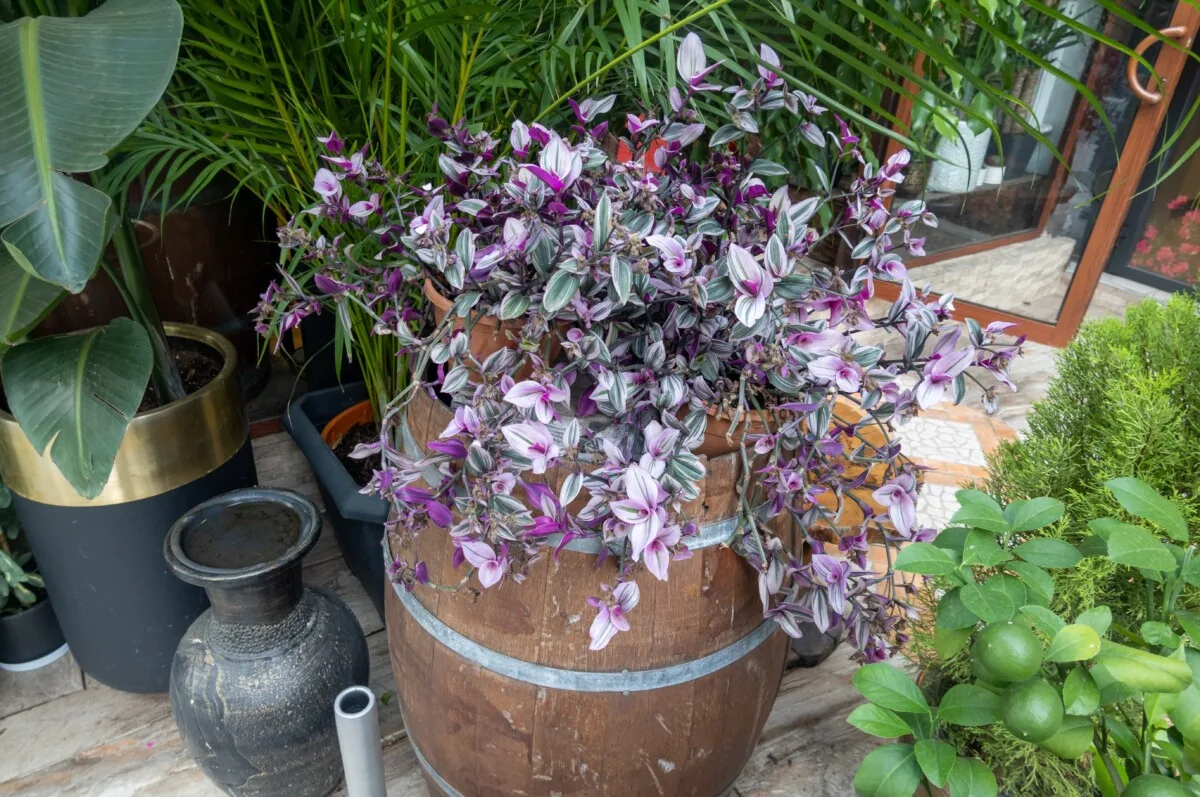
7. All the Inch Plants
One of the coolest things about these plants is how many species there are – well over 75. There are numerous varieties grown as houseplants, such as the popular Tradescantia zebrina. But you’ve probably also seen Purple Heart (Tradescantia pallida), grown in outdoor planters and landscapes.
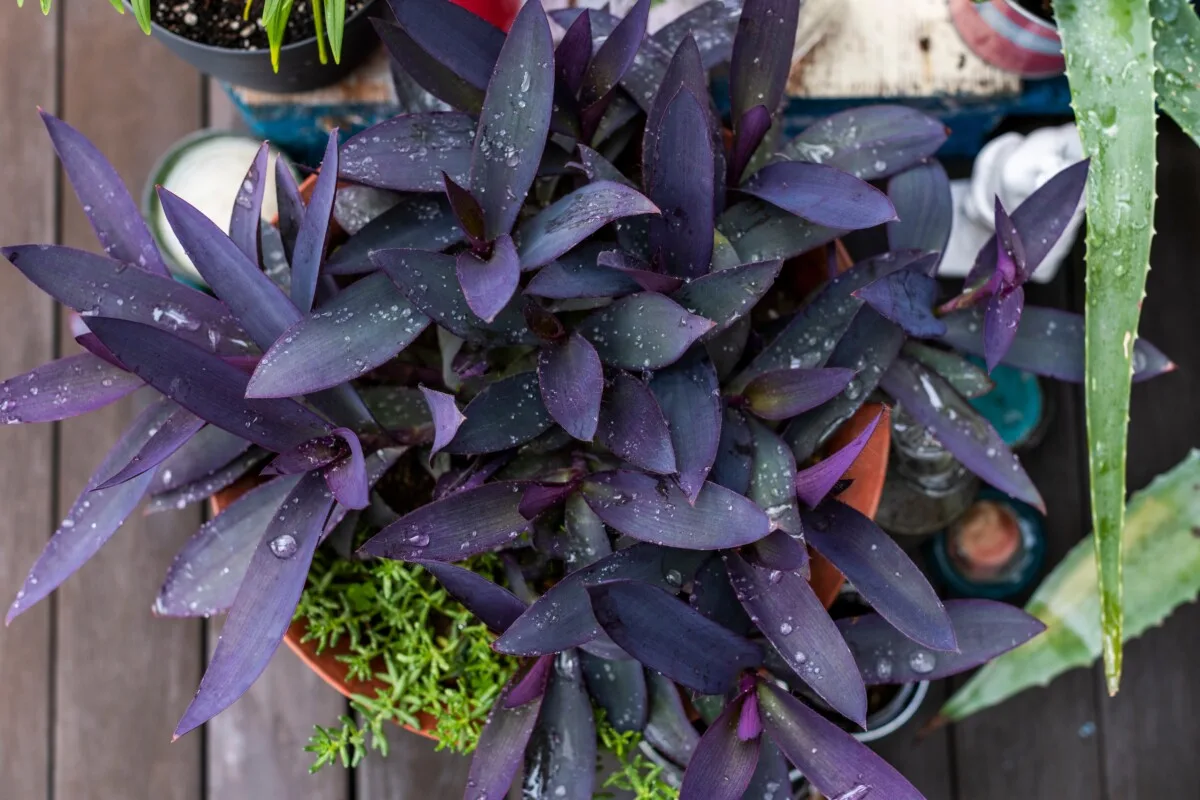
Tahitian bridal veil is a personal favorite of mine, with its tiny emerald leaves and delicate stems. It’s easy to see where it gets its name from when tiny flowers appear.
But one of the most fun species is Tradescantia sillamontana, and it’s leaves are soft and fuzzy. If there was ever a plant that begged to be cuddled, it’s this one.
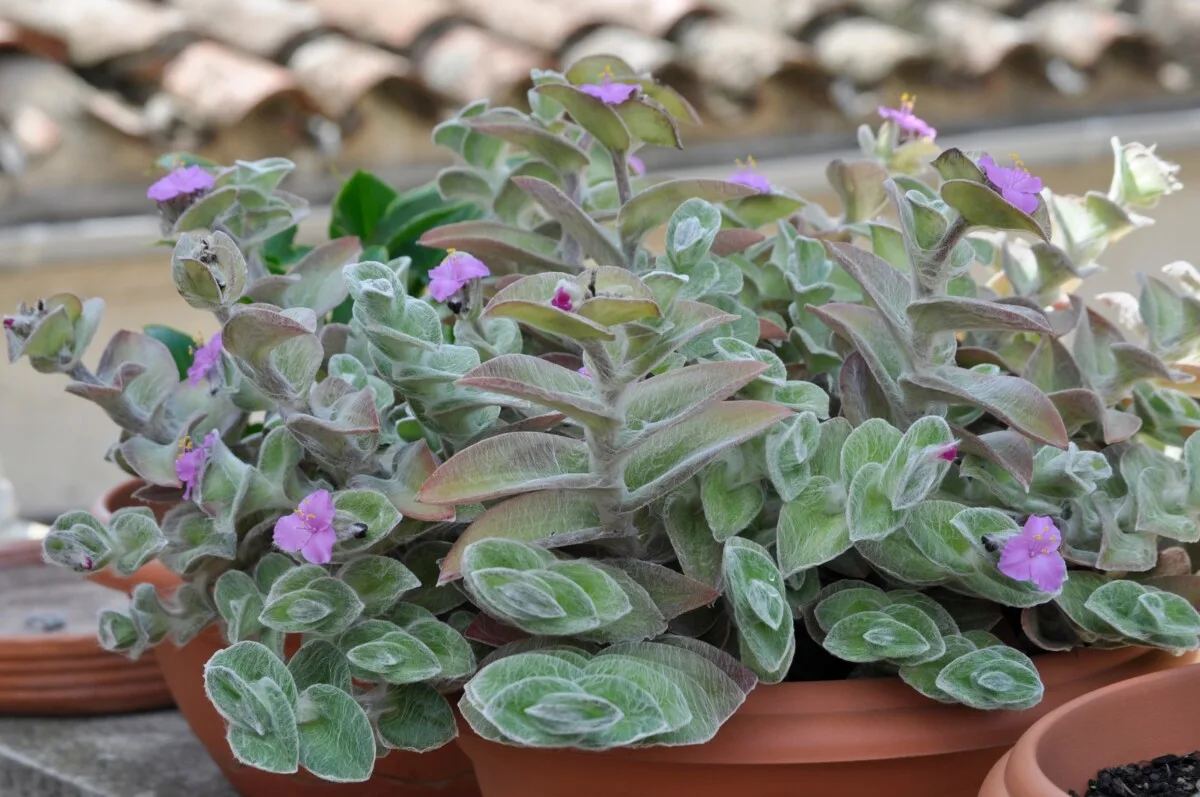
What I’m getting at is there’s a tradescantia for everyone.

Get the famous Rural Sprout newsletter delivered to your inbox.
Including Sunday ramblings from our editor, Tracey, as well as “What’s Up Wednesday” our roundup of what’s in season and new article updates and alerts.


